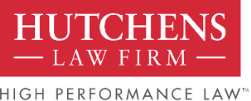As North Carolina continues attract new residents from across the nation and as state-wide growth continues, one small public and private concern with regional development involves the management of water drainage.
Any improvement to land will affect the otherwise natural flow of water drainage, whether such improvement is accomplished by governmental agency, corporate developer or private citizen. To reduce the occurrence of drainage problems, most state agencies and developers will work together to build-up infrastructure, create environmental buffer zones and limit imperious areas (roads, parking lots, rooftops, etc.). Despite these proactive measures, the disruption of the natural flow of water drainage can be a nuisance and/or cause damage to neighboring landowners.
Harm caused by surface water drainage has been handled differently by various jurisdictions throughout the United States, but can be summarized by three (3) basic doctrines or rules:
- The “Common Enemy Rule;”
- The “Civil Law Rule,” or Anti-Common Enemy Rule; and
- The “Reasonable Use Rule.”
The Common Enemy Rule essentially states that surface water is a common enemy to all, and every landowner has the right to manipulate the flow of water drainage by any means necessary to protect that landowner’s property – no matter the consequences or harm to a neighboring landowner. As one commentator suggested, the Common Enemy Rule may create an environment in which “landowners are encouraged to engage in contests of hydraulic engineering in which might makes right and breach of the peace is often inevitable.”
An alternative rule, The Anti-Common Enemy Rule (as one may expect after reading the preceding paragraph), “subjects a landowner to liability whenever he interferes with the natural flow of surface waters to the detriment of another….”
North Carolina is among the states which have adopted the more flexible third alternative - The Reasonable Use Rule - in dealing with surface water drainage. North Carolina courts view The Common Enemy Rule and The Anti-Common Enemy Rule as too rigid, and look to the totality of circumstances in assessing liabilities and damages which the Reasonable Use Rule provides. Factors to be considered in a case for surface water drainage damages in North Carolina include the following: the intentional, unreasonable, negligent or reckless actions of the a landowner; the value of the actions of the a landowner; the whether the actions of the a landowner are typical or suitable for the locality; and the burden on a landowner to minimize the damage caused by the drainage.
While the reasonableness of a landowner’s actions is critical in assessing liability in many water drainage lawsuits, there may be superseding obligations which prohibit certain acts no matter how reasonable they may seem. Landowners should take care before acting rashly and unilaterally to address drainage issues. Overriding obligations which may prohibit a landowner from taking action to manipulate the flow of water drainage include state or municipal laws; easement agreements; recorded plat maps; and Covenants, Conditions and Restrictions (Restrictive Covenants).
While it does not create bright line rules for determining fault, The Reasonable Use Rule adopted by North Carolina courts seems to be a well-balanced method of allowing interested parties to cooperate in handing water drainage issues as our State continues to attract more people and encourage development.
Maloney and Plager, Diffused Surface Water: Scourge or Bounty (1968)
Pendergrast v. Aiken, 293 NC 201 (1977)
Idem.
Woodward v. Cloer, 68 N.C. App. 331 (1984)
Published on May 13, 2016
